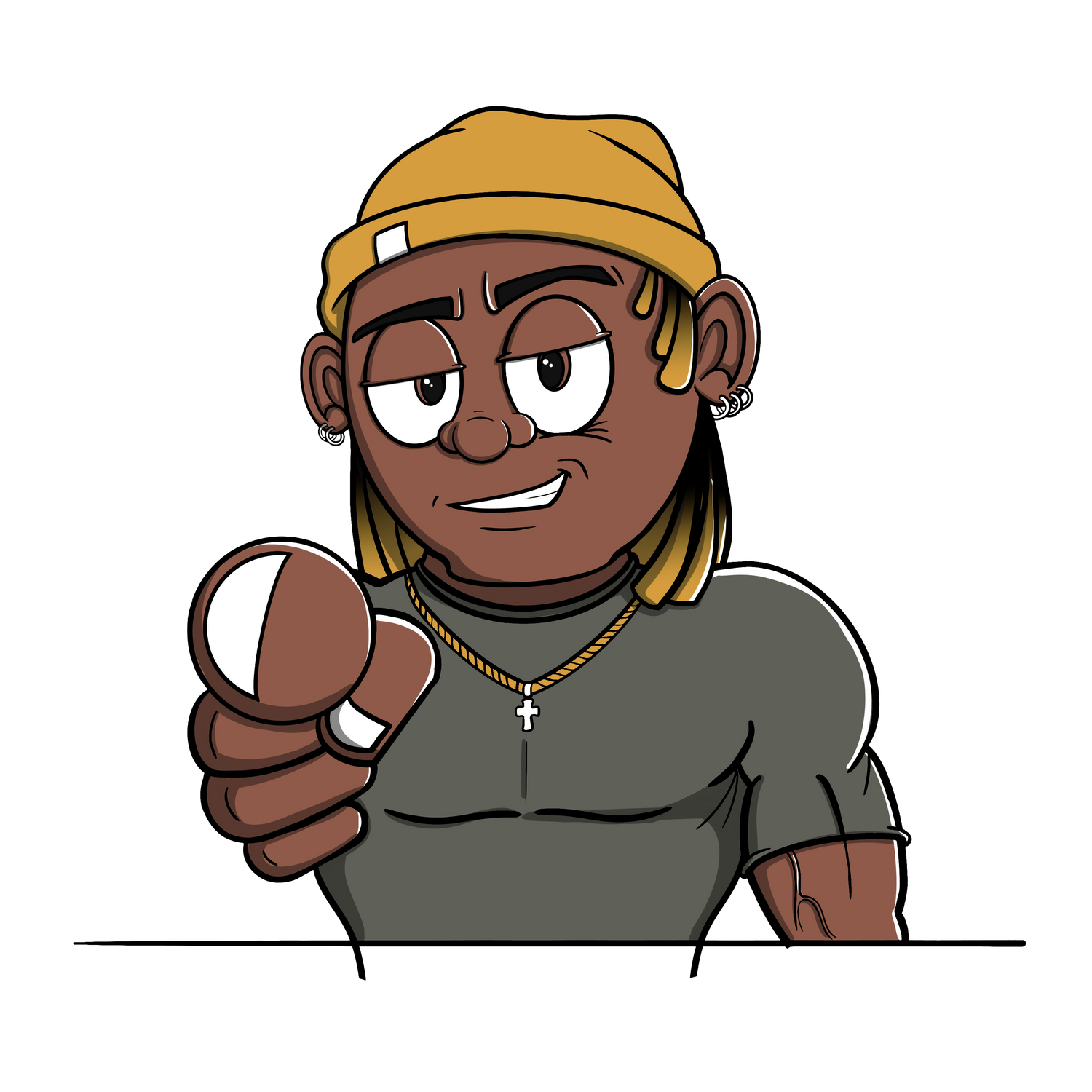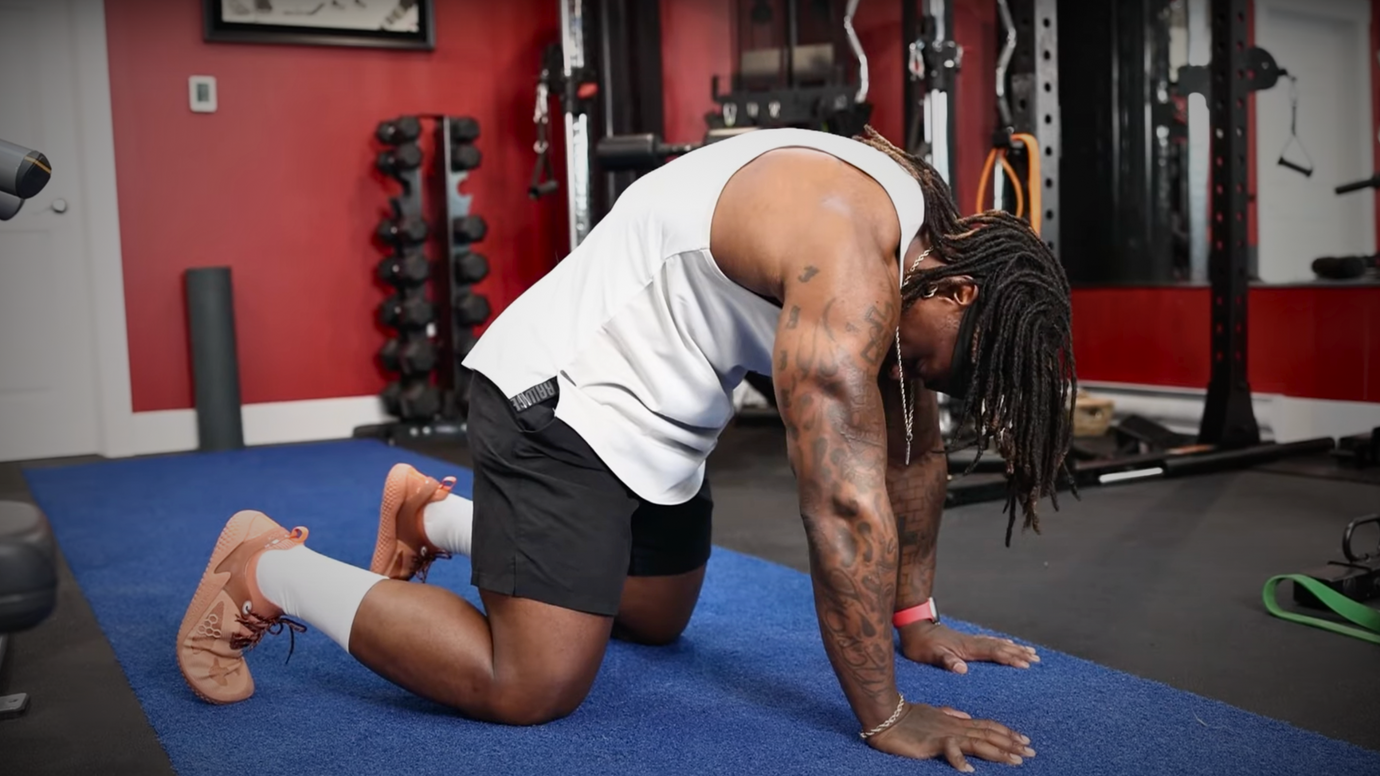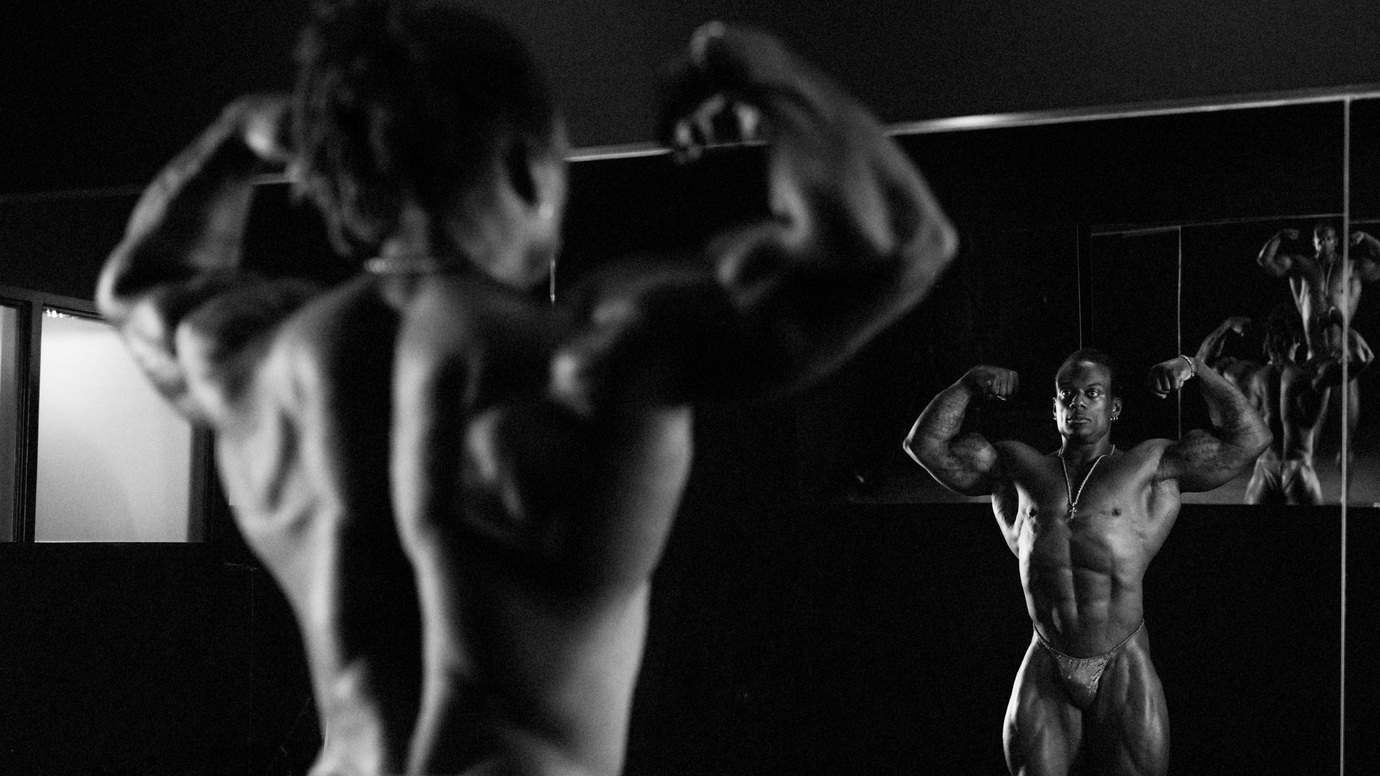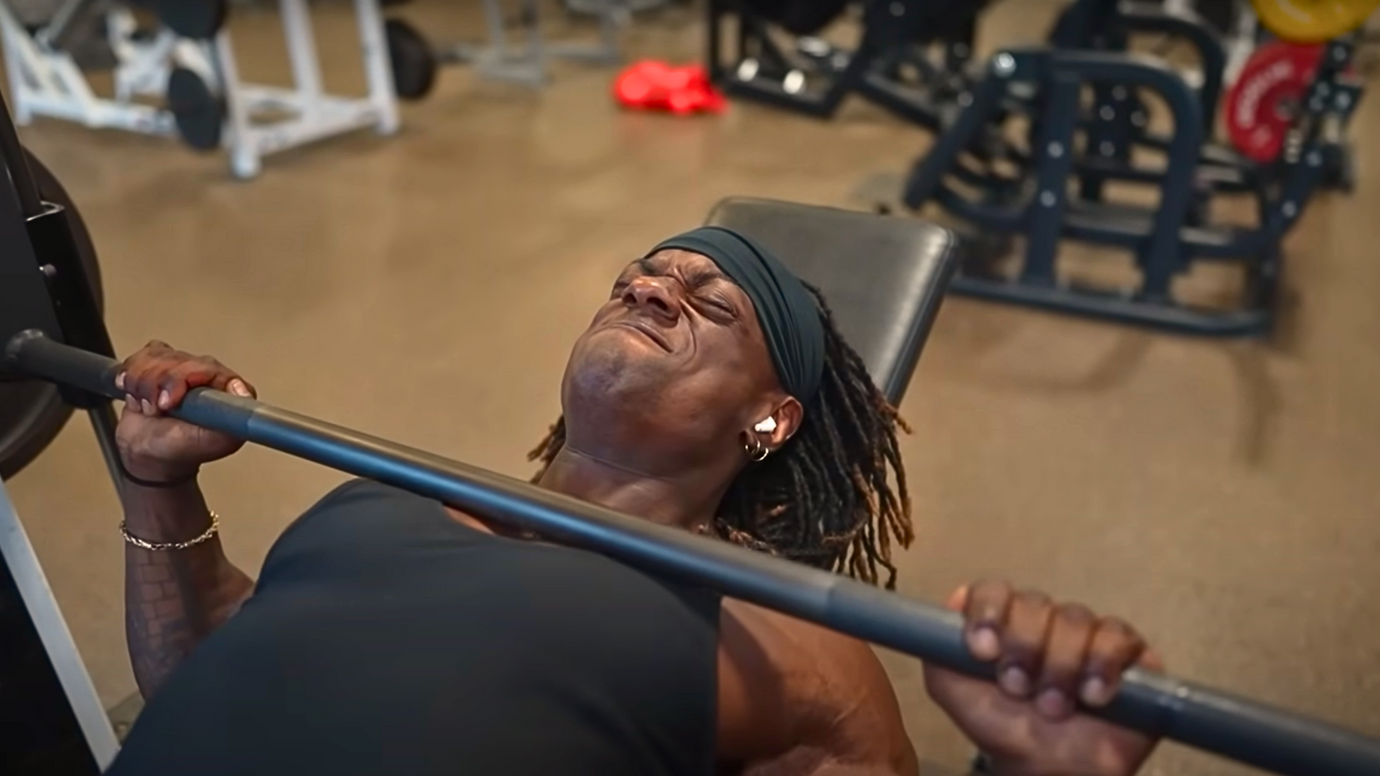Building Bigger Legs: The Best Leg Workout Without Squats

Building Bigger Legs: The Best Leg Workout Without Squats
Is back pain keeping you from training your legs? Squats have always been the go-to leg day exercise. But too much squatting with too much weight can lead to back pain. Especially when you start reaching your 40s. So, I'm giving you a Leg Day Workout, without squats!
Believe it or not, it is possible to build big strong legs and avoid injuries. The way to do this is by working the muscles individually. By selecting exercises that hit the hamstrings, quads, and glutes, you don't have to load the spine.
If you've been following me for a while you know that I have back injuries from putting too much stress on my lower back and lifting way too much weight while not engaging my core. But after a lot of work on my Mobility and core engagement, I am pain-free!
So, let's get into it. To hear me walk you through these exercises watch this video⬇️ Otherwise, read on.
3 Exercises to Build Your Legs Without Squatting!
First up are Seated and Lying Hamstring Curls. To train your quads and hamstrings effectively.

1.) Leg Extensions (Lying Hamstring Curls)
Back Pain
First off, If you're experiencing back pain at the gym it's important to take immediate action.
If you're waking up with back pain, it's probably best to stay away from the gym and seek professional help from a physiotherapist or massage therapist. Address and treat the issue before getting back in the gym. You don't want to make things worse.
Allow your body to heal adequately and then gradually return to strengthening your lower back and the other muscles you aim to target. By prioritizing your health and healing you'll ensure safer and more effective workouts.
Core Engagement During Hamstring Curls
Another important aspect of avoiding back pain is to make sure you're engaging the core throughout your movements.
Pull your belly button towards your spine and keep your core tight throughout the exercise. This helps stabilize your spine and take some of the pressure off of your lower back.
Engaging Your Lower Back
To ensure our lower back remains engaged, it's crucial to maintain control during the hamstring curl. Instead of flopping down, you want to lower yourself down with control and carefully position your feet. This approach not only protects your back but also enhances the effectiveness of the exercise.
Because of the way the benches are designed this exercise can put stress on your lower back. That's why I have a strong preference for seated hamstring curls over lying hamstring curls. Seated curls help ease the strain on my back, especially when I'm doing the exercise.
If your gym doesn't have a seated hamstring curl machine, try and find alternative ways to support your lower back during exercises.
A solid solution would be grabbing a rolled-up mat or towel and sliding it under your pelvis for that extra support while you're on the machine. Then step in, tighten your core, get your feet in position, lower yourself down, and start the exercise.
This adjustment not only helps maintain proper form but also maximizes the effectiveness of your workout by ensuring your lower back is adequately supported.
TIP for Proper Positioning:
To enhance your technique and protect your lower back, adjust the position of your support near your pelvis. This adjustment will slightly elevate your hips, reducing the strain on your lower back—a lot of people are limited in their hip flexibility.
It can be challenging to maintain flat hips with extended engagement. The key to mastering hamstring curls lies in keeping your hips in a straight, extended position, avoiding any arching that can stress the lower back.
Substantial support from your pelvis will not only stabilize your posture but ensure that your hips remain elevated. This is how we reduce pain!
Lastly, when performing hamstring curls, focus on executing a slow, controlled eccentric phase. This approach intensifies the exercise, targeting the hamstrings directly while minimizing the involvement of unintended muscle groups, particularly the lower back.
Weight
Using excessively heavy weights could lead to the recruitment of additional muscle groups you don't intend to work. This can counteract the effectiveness of the exercise, as well as lead to discomfort in the lower back.
So, it is crucial to select an appropriate weight that allows you to execute the movement properly. Concentrate your effort on the hamstrings and avoid unnecessary strain anywhere else.
Next, let's strengthen our quads with some leg extensions.

2.) Leg Extensions(Seated)
Once again when it comes to Leg Extension proper form is essential to avoid strain on your back.
Performing seated hamstring curls strengthens these key muscle groups and puts your back in a better position. This helps alleviate the discomfort you get when lying on your stomach.
Some common mistakes include:
- Arching the back
- Rolling the hips
- Not engaging your core
These mistakes can compromise your posture leading to pain.
Be sure to maintain an upright posture as if a hook were lifting you by the chest. This principle applies to all exercises, from squats to deadlifts, your posture matters.
So remember, even when seated you should maintain an upright position with an engaged core. This posture sets a strong foundation for an effective workout and minimizes the risk of compression or strain on your lower back.
Adjusting Seat for Back Support During Leg Extensions
Adjust the seat to allow your back to rest flush against the bench, eliminating any gaps. Once you're positioned, your back should lie flat, allowing you to grip and pull yourself up.
Maintain an elevated chest, and tight core, and flex your quads fully on the ascent. Control the descent to get a good stretch. Breathe in on the way down and out on the way up.
Each repetition should intensify a feeling of tightness.
If you're unable to engage your core actively the weight may be too heavy. Simply "hucking" the weight up in hopes of working your quads and tightening your core isn't effective.
Both the Leg Bress and Hamstring Curl won't overburden you but still provide a focused and effective workout.
Moving on, let's talk about the leg press.

3.) Leg Press
This is another movement that allows us to train our legs effectively without putting undue stress on our spines.
The leg press is a fantastic alternative to squatting. It targets the quads, glutes, and hamstrings. Bringing together the best of everything in one machine! The key to using the leg press effectively is again to ensure proper positioning on the back pad.
Don't forget, Positioning Matters!
You don't want a gap between your lower back and the pad when pressing. This could lead to your hips lifting off at the bottom of the movement, potentially causing spinal compression.
Optimizing Your Leg Press Technique
Make sure to adjust the back plate so that your back remains flat throughout the exercise.
If the seat is set too low and you descend too deeply, you risk your butt rolling under, compressing your spine.
So,
- position your butt firmly against the back of the seat,
- pull yourself in,
- engage your core,
- and place your feet in a position that allows for adequate knee-over-toe action.
Focus on hip and knee flexion, but only lower as far as you can while keeping your butt in the seat. Remember, the goal is to strengthen without compromising your spinal health.

Leg Press for Safety and Efficacy
Make sure your whole foot stays in touch with the plate as you push, keeping the pressure evenly spread across your heels and toes.
Your knees should naturally extend over your toes, allowing for proper knee and hip flexion.
In this position, your glutes, hamstrings, and quads are effectively engaged, ready to concentrically load as you press the weight upward. You want to manage the weight smoothly, avoiding any pause reps, this can place undue stress on your lower body.
Control, control, control!
Focus on a fluid motion, smoothly descending and ascending. This is, again, why weight selection matters. Select a weight that challenges your muscles without forcing reliance on your lower back. This method really targets those hamstrings and quads, bringing them into the mix for a solid leg press session!
Let's dive into one final exercise to specifically target the glutes. How do we do that? We're going to perform a split squat, also known as a stationary lunge, but with a twist.

4.) Split Squat
Many people wonder how to grow their glutes without squatting. Squatting primarily involves hip and knee flexion. A split squat does the same, but by splitting the squat, you achieve high and deep flexion without loading the spine.
This exercise is beneficial not only because it avoids spinal load but allows you to maintain a neutral spine. This makes this exercise especially useful for people managing back pain
We'll start by elevating the front foot, achieving greater depth, which in turn will more effectively engage the glutes.
Depending on your fitness level, you can choose to use either dumbbells or your body weight for this exercise. The goal is to set up in a way that allows for maximum hip and knee flexion.

Performing the Exercise:
- Step back slightly and place one foot back, elevated, so the toe is high.
- As you lower into the lunge, your knee will travel over your toe.
- Your torso should align with your shin angle, ensuring a neutral spine and significant hip and knee flexion.
- Keep your core engaged.
- Your hands can rest on your hips or hold dumbbells by your sides.
- As you lower into the lunge, push your hips back and allow your knee to move forward, touching the ground, while maintaining forward knee travel.
- Push through your heel to return to the starting position, and repeat.
Make sure you're driving back up with power. The depth can be adjusted by changing the height of the elevation according to your fitness level.
For beginners, start with a lower elevation. For those more advanced, increase the height to challenge your stability and strength further.
By incorporating this exercise into your routine, you'll not only work towards stronger, more defined glutes but also ensure a healthy, neutral spine posture throughout.
Tissue work and Massage Therapy
It's crucial to incorporate tissue work by consulting with a massage therapist or physiotherapist to address any issues you may have.
Focusing on improving mobility and core engagement is a lifelong commitment, but it won't prevent us from achieving the great physiques we desire.
So, as you can see, it is possible to grow your legs without squatting. You can build strong glutes, hamstrings, and quads without the aggravating back pain or re-injuring yourself. This commitment to your physical health is lifelong, as it is for me, but it doesn't preclude us from developing the strong, well-defined legs we desire.

Elevate Your Training Today!
If you're ready to maximize your growth and finally achieve your dream physique, check out some of the effective resources on my website, Jonnieshreve.com.
🔥Private 1 on 1 Online Coaching
, you can find it all!
And if you’re looking to hit the stage this year, check out my Hardcore Training Contest Prep! 💪🏾





